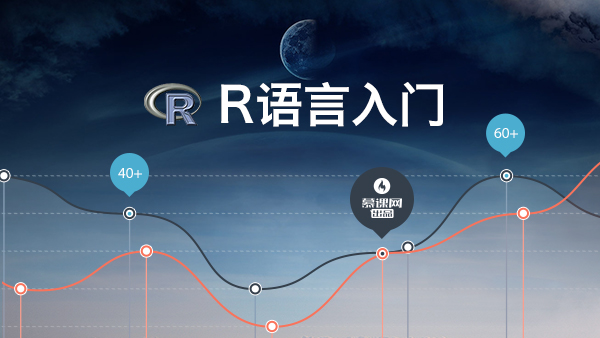This tutorial provides a quick introduction to using Spark. We will first introduce the API through Spark’s interactive shell (in Python or Scala), then show how to write applications in Java, Scala, and Python.
这是一个快速入门的spark教程。我们将首先通过Spark的交互式shell介绍API(在Python和Scala),然后说明如何通过java,scala,和Python编写应用程序
To follow along with this guide, first download a packaged release of Spark from the Spark website. Since we won’t be using HDFS, you can download a package for any version of Hadoop.
使用这个指南,首先需要到官网下载一个发行版本的spark,由于我们不会使用到HDFS,你可以任意选择一个Hadoop版本
Note that, before Spark 2.0, the main programming interface of Spark was the Resilient Distributed Dataset (RDD). After Spark 2.0, RDDs are replaced by Dataset, which is strongly-typed like an RDD, but with richer optimizations under the hood. The RDD interface is still supported, and you can get a more complete reference at the RDD programming guide. However, we highly recommend you to switch to use Dataset, which has better performance than RDD. See the SQL programming guide to get more information about Dataset.
需要注意,在spark2.0之前,spark的核心抽象是弹性分布式数据集RDD,在Spark2.0之后,RDDs已经被Dataset取代,类似一个强类型的RDD,并且在原有引擎之下做了更加丰富的优化。RDD接口仍然被支持,你可以在RDD编程指南获得更完整的文档。但是,我们强烈建议您切换使用Dataset,相比RDD它具有更好的性能并且包含数据集的更多信息,详情请参考SQL编程指南。
Interactive Analysis with the Spark Shell
Basics
Spark’s shell provides a simple way to learn the API, as well as a powerful tool to analyze data interactively. It is available in either Scala (which runs on the Java VM and is thus a good way to use existing Java libraries) or Python. Start it by running the following in the Spark directory:
Spark shell提供了一个简单的方法来学习API,以及一个强大的工具来分析数据交互。你可以选择scala或者python来进行shell交互。在Spark目录中运行以下命令启动它:
./bin/spark-shellSpark’s primary abstraction is a distributed collection of items called a Dataset. Datasets can be created from Hadoop InputFormats (such as HDFS files) or by transforming other Datasets. Let’s make a new Dataset from the text of the README file in the Spark source directory:
Spark的主要抽象是一个称为Dataset的分布式集合,Dataset可以从hadoop的支持的格式(如hdfs)或者通过其他的Dataset进行转换操作创建。让我们使用一个文本文件创建一个新的Dataset,这个文件在Spark根目录下:
scala> val textFile = spark.read.textFile("README.md")
textFile: org.apache.spark.sql.Dataset[String] = [value: string]You can get values from Dataset directly, by calling some actions, or transform the Dataset to get a new one. For more details, please read the API doc.
通过调用一些行动操作,或者转换数据集来获得新数据集,可以直接从DataSet中获取值。欲了解更多详情,请阅读API文档。
scala> textFile.count() // Number of items in this Dataset
res0: Long = 126 // May be different from yours as README.md will change over time, similar to other outputs
scala> textFile.first() // First item in this Dataset
res1: String = # Apache SparkNow let’s transform this Dataset to a new one. We call filter to return a new Dataset with a subset of the items in the file.
现在让我们把这个数据集转换成一个新的数据集。我们调用filter以返回文件中项目的子集的新数据集。
scala> val linesWithSpark = textFile.filter(line => line.contains("Spark"))
linesWithSpark: org.apache.spark.sql.Dataset[String] = [value: string]We can chain together transformations and actions:
我们可以链式调用转换和行动操作
scala> textFile.filter(line => line.contains("Spark")).count() // How many lines contain "Spark"?
res3: Long = 15More on Dataset Operations
Dataset actions and transformations can be used for more complex computations. Let’s say we want to find the line with the most words:
Dataset的行动和转换操作可以用于更加复杂的计算,比如我们想找到单词最多的一行
scala> textFile.map(line => line.split(" ").size).reduce((a, b) => if (a > b) a else b)
res4: Long = 15This first maps a line to an integer value, creating a new Dataset. reduce is called on that Dataset to find the largest word count. The arguments to map and reduce are Scala function literals (closures), and can use any language feature or Scala/Java library. For example, we can easily call functions declared elsewhere. We’ll use Math.max() function to make this code easier to understand:
首先将一行映射为整数值,创建一个新的数据集。reduce操作将在Dataset中找出单词书最多的一行。map和reduce的参数是scala函数,并且可以使用任何语言比如Scala/java库。例如,我们可以方便地调用别处声明的函数。我们将使用Math.max()功能使代码更容易理解:
scala> import java.lang.Math
import java.lang.Math
scala> textFile.map(line => line.split(" ").size).reduce((a, b) => Math.max(a, b))
res5: Int = 15One common data flow pattern is MapReduce, as popularized by Hadoop. Spark can implement MapReduce flows easily:
一种常见的数据流模式是MapReduce,由Hadoop普及。Spark可以很容易地实现MapReduce流:
scala> val wordCounts = textFile.flatMap(line => line.split(" ")).groupByKey(identity).count()
wordCounts: org.apache.spark.sql.Dataset[(String, Long)] = [value: string, count(1): bigint]Here, we call flatMap to transform a Dataset of lines to a Dataset of words, and then combine groupByKey and count to compute the per-word counts in the file as a Dataset of (String, Long) pairs. To collect the word counts in our shell, we can call collect:
在这里,我们调用faltMap方法将Dataset中的每一行转换成单词生成一个新的Dataset,然后调用groupByKey和count方法计算出每个单词出现的次数,在我们的shell中收集单词计数,我们可以调用collect方法:
scala> wordCounts.collect()
res6: Array[(String, Int)] = Array((means,1), (under,2), (this,3), (Because,1), (Python,2), (agree,1), (cluster.,1), ...)Caching
Spark also supports pulling data sets into a cluster-wide in-memory cache. This is very useful when data is accessed repeatedly, such as when querying a small “hot” dataset or when running an iterative algorithm like PageRank. As a simple example, let’s mark our linesWithSpark dataset to be cached:
spark还支持将数据缓存的集群内存中。当重复访问数据时,如查询一个小的热点数据集或运行一个类似PageRank的迭代算法时,这是非常有用的。看一个简单的例子,我们将linesWithSpark Dataset缓存起来:
scala> linesWithSpark.cache()
res7: linesWithSpark.type = [value: string]
scala> linesWithSpark.count()
res8: Long = 15
scala> linesWithSpark.count()
res9: Long = 15It may seem silly to use Spark to explore and cache a 100-line text file. The interesting part is that these same functions can be used on very large data sets, even when they are striped across tens or hundreds of nodes. You can also do this interactively by connecting bin/spark-shell to a cluster, as described in the RDD programming guide.
这看起来似乎有点小题大做使用spark去缓存100行文本文件,令人激动的是同样的方法可以作用于非常大的数据集之上,即使数据在几十或者几百的节点之上。你也可以通过spark-shell连接一个集群进行交互操作
Self-Contained Applications
Suppose we wish to write a self-contained application using the Spark API. We will walk through a simple application in Scala (with sbt), Java (with Maven), and Python.
如果我们想使用spark API来编写一个独立的应用程序,我们可以使用scala(SBT构建,也可以使用Maven),Java(Maven构建),Python,一个简单的例子如下:
/* SimpleApp.scala */
import org.apache.spark.sql.SparkSession
object SimpleApp {
def main(args: Array[String]) {
val logFile = "YOUR_SPARK_HOME/README.md" // Should be some file on your system
val spark = SparkSession.builder.appName("Simple Application").getOrCreate()
val logData = spark.read.textFile(logFile).cache()
val numAs = logData.filter(line => line.contains("a")).count()
val numBs = logData.filter(line => line.contains("b")).count()
println(s"Lines with a: $numAs, Lines with b: $numBs")
spark.stop()
}
}Note that applications should define a main() method instead of extending scala.App. Subclasses of scala.App may not work correctly.
请注意,应用程序应该定义一个main()方法而不是scala.app。Scala的子类应用程序可能不能正常工作。
This program just counts the number of lines containing ‘a’ and the number containing ‘b’ in the Spark README. Note that you’ll need to replace YOUR_SPARK_HOME with the location where Spark is installed. Unlike the earlier examples with the Spark shell, which initializes its own SparkSession, we initialize a SparkSession as part of the program.
这个程序只是对README.md文件中包含字母‘a’和包含字母‘b’的单词进行一个计数操作,请注意你需要替换YOUR_SPARK_HOME为你spark的安装目录,和spark-shell中不同的是这里我们需要自己初始化一个SparkSession
We call SparkSession.builder to construct a [[SparkSession]], then set the application name, and finally call getOrCreate to get the [[SparkSession]] instance.
调用 SparkSession.builder 方法创建一个SparkSession,并且可以设置应用的名称,最后调用getOrCreate方法获取到一个SparkSession的实例
Our application depends on the Spark API, so we’ll also include an sbt configuration file, build.sbt, which explains that Spark is a dependency. This file also adds a repository that Spark depends on:
应用程序依赖于Spark API,所有我们需要配置SBT配置文件,build.sbt,其中需要配置spark所需依赖,如下:
name := "Simple Project"
version := "1.0"
scalaVersion := "2.11.8"
libraryDependencies += "org.apache.spark" %% "spark-sql" % "2.2.0"For sbt to work correctly, we’ll need to layout SimpleApp.scala and build.sbt according to the typical directory structure. Once that is in place, we can create a JAR package containing the application’s code, then use the spark-submit script to run our program.
SBT的想要正确工作,我们需要布置SimpleApp.scala和build.sbt成如下的目录结构。完成之后,我们就可以创建包含应用程序代码的jar包,然后使用spark-submit 脚本运行我们的程序。
# Your directory layout should look like this
$ find .
.
./build.sbt
./src
./src/main
./src/main/scala
./src/main/scala/SimpleApp.scala
# Package a jar containing your application
$ sbt package
...
[info] Packaging {..}/{..}/target/scala-2.11/simple-project_2.11-1.0.jar
# Use spark-submit to run your application
$ YOUR_SPARK_HOME/bin/spark-submit \
--class "SimpleApp" \
--master local[4] \
target/scala-2.11/simple-project_2.11-1.0.jar
...
Lines with a: 46, Lines with b: 23

 随时随地看视频
随时随地看视频




